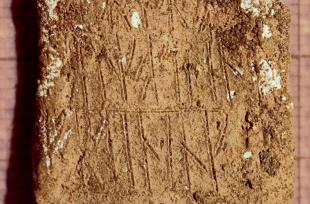Around 1960, the winter grazing of farm animals out here came to an end. Less grazing resulted in the gradual taken over by bushes and trees. The reafforestation of the last 40 years up until the renovations were carried out has been far more dramatic than the changes in vegetation that were documented after the Black Death.With the building of the Lynghei Centre, the heather moors were restored once again.
Pollen analysis shows that the island was cleared of forest, and the heather moor-based farming in place already in the 700s. In Viking times and up until the Black Death (1350 A.D), Lurekalven was an independent farm. The depopulation following the Black Death affected the farms lying on the outskirts of the central settlements in the communities. When the farm was left empty, the name of the farm most often also disappeared; replaced by the ubiquitous Island farm or Island ground. After the Black Death, the farm was deserted, but the island continued to have grazing land.
The archaeological excavations in the 1970s revealed traces of both houses and fields. The site shows a longhouse with rough kitchen, living quarters, shed and hayshed with cowshed. Around the central yard are traces of stone mounds and fields in sunny slopes. Ceramic from Europe was also discovered in the building ruins.This shows that production from the farm was large enough to take to the market (Bryggen) in Bergen and trade for imported goods. The fields that were cultivated amounted to about a 1000 m² - mostly used in the growing of barley.



